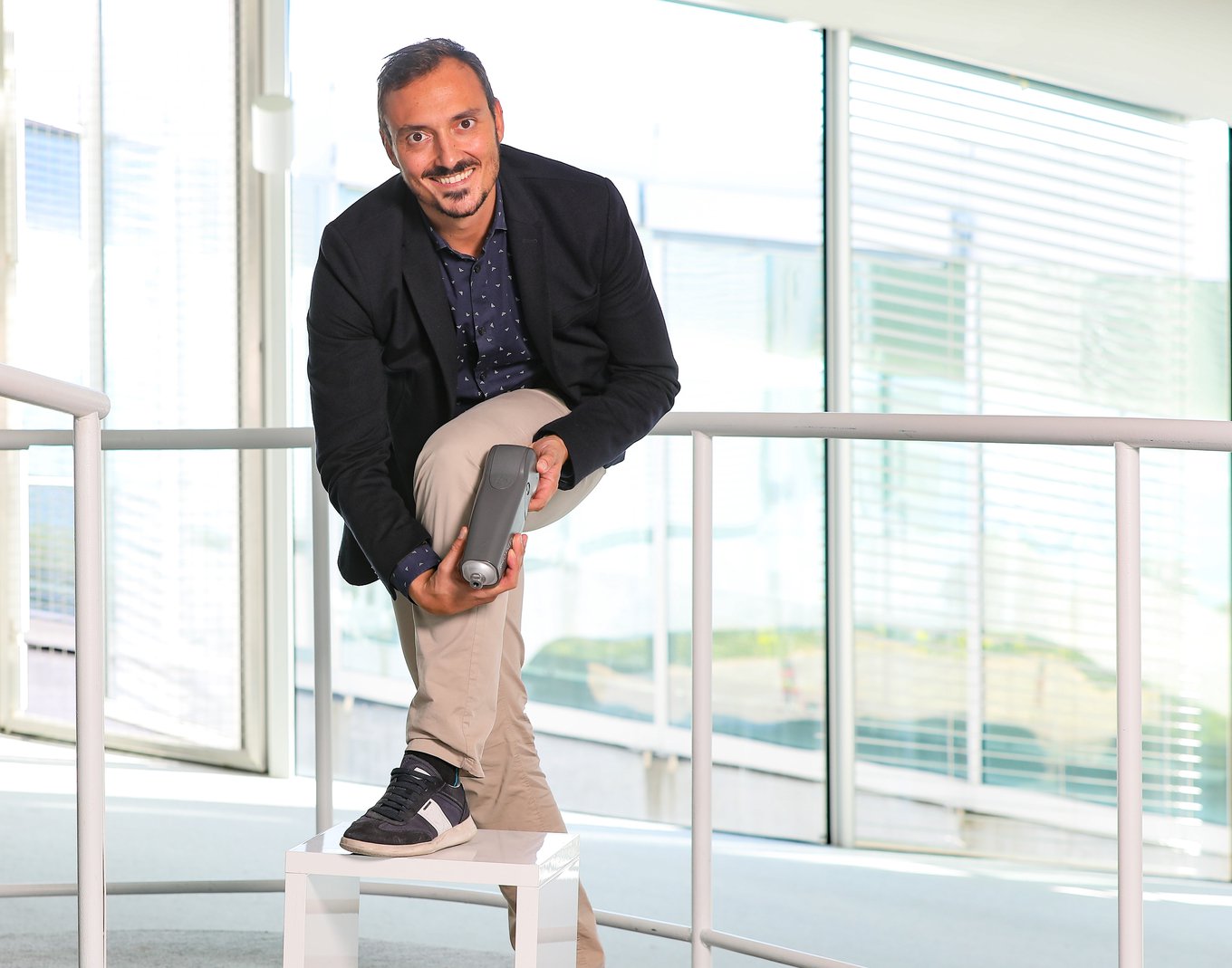Confusion when locating potholes in the streets, difficulties with feeling obstacles, and problems in readjusting the pace of their step according to the ground, are some of the challenges that leg amputees face on a daily basis. Today's prosthetics do not convey sensory information about the environment and, as a result, their wearers overuse their good leg which increases their likelihood of falling. People all over the world experience this situation. As a matter of fact, in the United States and Europe alone, there are about four million lower limb amputees.
Although orthopaedics are already highly mobile, they cannot replicate the feeling of having a real leg. To address this problem, SensArs Neuroprosthetics founder, Francesco Petrini, has developed SENSY. This prosthesis allows users to perceive tactile sensations, which gives them greater confidence and helps them avoid falls. Thanks to this proposal, the young biotechnologist has become one of the winners of Innovators Under 35 Europe from MIT Technology Review.
Through sensors located in the area of the sole and the knee of the prosthetic, SENSY collects data on the environment and translates it into electrical impulses. The patient then receives stimulation through electrodes implanted in the tibial nerve of his amputated area, at thigh level. "Thus, the brain processes the information and the user perceives what happens through their prosthetic," adds Petrini, who says that these communications are carried out wirelessly and almost in real time.
The first prototype of SENSY was tested in 2013 and was aimed at people with amputated hands. It was composed of electrodes that provided electrical stimuli proportional to the data readings taken by fingerprint sensors. This allowed users to control the force they exerted on the prosthesis and recognized different objects according to their shape. Three different patients tested this device for six months and it was optimized to ensure safety and effectiveness in a variety of everyday situations. Finally, SENSY was adapted for people with leg amputations, as they represent 80% of amputees.
By restoring the ability to feel, SENSY is able to reduce falls, increase user mobility and "minimize the sensation of phantom limb pain, which consists of the sensation of pain on a limb that has been amputated," adds Petrini. These characteristics differentiate the product from other similar devices already on the market. According to the innovator, some companies have already implanted electrodes in the tibial nerve, but they are working around the nerve instead. This causes the user to receive unnatural sensations and rejects the prosthetics. To avoid these strange sensations, Petrini has installed these electrodes inside the nerve. His current challenge is to access funding to develop a new prototype of SENSY, to test it in clinical trials, and to obtain the necessary certifications so that it can be marketed and thus, improve the quality of life of amputees. For the time being, the young innovator has already identified two hospitals to carry out the trials: Gemelli University in Rome, Italy and Charité in Berlin, Germany.
François Jouen, Director of Studies and Senior Researcher at the Ecole Pratique des Hautes Etudes as well as member of the Innovators Under 35 Europe 2019 judges, acknowledges the development of SENSY and comments that Petrini "proposes a very innovative approach to restoring the processing of sensory information for people with amputations."
By Alba Casilda
Translation: Brian Bostwick




